Aviation and spacecraft engineering. Рубрика в журнале - Siberian Aerospace Journal
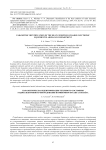
Статья научная
A mathematical model of the aircraft avionics thermal state describing the heat exchange of the onboard equipment housing with a honeycomb structure made of a carbon fiber composite, the process of heat transfer of the onboard equipment elements and the air is developed. The considered heat transfer process in a heterogeneous medium is described by the boundary value problem for the heat equation with boundary conditions of the third kind. To solve the direct problem of the onboard equipment housing with a honeycomb structure thermal state, the Monte- Carlo method on the basis of the probabilistic representation of the solution in the form of an expectation of the functional of the diffusion process is used. The inverse problem of the honeycomb structure heat exchange is solved by minimizing the function of the squared residuals weighted sum using an iterative stochastic quasigradient algorithm. The developed mathematical model of the onboard equipment in the unpressurized compartment thermal state is used for optimizing the temperature and airflow of the thermal control system of the blown onboard equipment in the unpressurized compartment of the aircraft.
Бесплатно
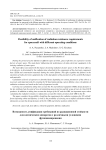
Статья
During the period of active lifetime in different types of orbits, spacecraft (SC) are exposed to various factors of outer space. The main factor influencing the performance of radio-electronic equipment is the ionizing radiation of outer space. The main effect associated with the impact of ionizing radiation of outer space on the SC (dose effects), in its physics, is determined by the radiation dose absorbed in the components of the electronic component base (ECB) and construction materials during the entire lifetime. This effect explains the failures in the operation of radio-electronic equipment due to the degradation of the parameters of the used ECB products and materials. Calculation of levels of exposure to absorbed doses depending on various parameters of the orbit is a necessary and important task for ensuring the SC functioning during a given lifetime, since calculations of radiation resistance are based on the levels of exposure in orbit. Carrying out calculations taking into account the SC and onboard equipment (OBE) design features is the key problem from the point of view of minimizing mass protection and the scope of tests of critical ECB products. In addition to taking into account the design of the SC and the OBE, an important aspect when calculating the radiation resistance is taking into account the relative position of the OBE in the SC. The paper considers the possibility of unifying the requirements for radiation resistance for SC with dif-ferent operating orbits and lifetime, as well as the possibility of carrying out a unified calculation without taking into account the design features of the SC, OBE and relative position within the SC.
Бесплатно
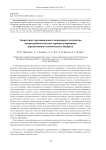
Статья научная
This paper presents an overview of the current technical problem related to two-phase spacecraft thermal control systems and possible technical applications of thermal energy recovery in the organic Rankine cycle as an integral part of thermal management systems. The design solution involves the integration of a steam microturbine behind an evaporator radiator. The microturbine is a tangential supply device and a radially centripetal impeller of low speed nst<40. In this area, there is no reliable data on the design and energy of both the supply device and the impeller. The energy (loss of enthalpy) of the supply device mainly determines the transport of the swirling flow to the impeller and, as a result, the circumferential operation on the turbine. A prototype of a radial microturbine has been developed and presented in order to evaluate the design of the flow part of both the supply device and the impeller. As a result of the analysis, the main determining hydrodynamic areas necessary for hydrodynamic analysis and mathematical elaboration of the flow calculation algorithm with an assessment of energy losses are identified: the flow of a swirling flow of a radial-annular slit; axial-annular slit and tangential supply device. The first two algorithms assume computational modeling, the model of energy losses in a tangential supply device is not amenable to analytical modeling because it includes a sequence (or compatibility) of flows under boundary conditions defined as “local resistances”: the sudden expansion, reversal of the flow, together with a section of radially circumferential flow, the mutual influence of these boundary conditions assumes only an expe rimental assessment of energy losses in a tangential supply device through the loss coefficient of local resistance in the range of changes in geometric and operating parameters. As a result of experimental studies, a database has been proposed on the loss coefficient of tangential microturbine supply devices in the field of the practical range of the existence of operating and design parameters.
Бесплатно
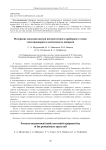
Pressure measurement inside non-sealed equipment bay of the geostationary spacecraft
Статья научная
The equipment of the non-sealed spacecraft is functioning during the operation phase in the envi-ronment that includes the equipment bay inherent atmosphere. JSC “ISS” together with MAI have developed and implemented in software a mathematical model for the pressure dynamics estimation of the equipment bay inherent atmosphere and for the design parameters selection and construction of the ventilation openings of the non-hermetic equipment bay. The pressure drop dynamics estimation of the equipment bay inherent atmosphere was also carried out according to the developed model. A block of the pressure sensors (joint development of ISS and Novosibirsk State University) was in-tegrated into the geostationary spacecraft for the in-situ pressure measurement inside the non-hermetic equipment bay during the operation. This block consists of two sensors: a semiconductor sensor based on MEMS- technology (micro-electromechanical system) and an inverse magnetron sen-sor with the cold cathode. The pressure sensor unit provides the pressure measurement from 790 up to 1∙108 mm Hg. The authors present the results of pressure measurements inside the non-hermetic equipment bay during the first six months of the spacecraft operation on the geostationary orbit. This article also compares the in-situ pressure measurement results and the calculated pressure drop obtained using the mathematical model for the non-hermetic equipment bay spacecraft.
Бесплатно
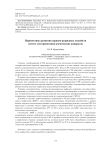
Prospects for the development of charger-discharge devices of spacecraft power supply systems
Статья научная
Power supply system (PSS) is designed to ensure uninterrupted autonomous power supply of on-board equipment in all modes and at all stages during the active life of spacecraft. Lots of PSS makes up a significant proportion of the mass spacecraft and improvement of specific energy characteristics of PSS leads to a synergistic effect when the mass and energy consumption resources available for the payload are simultaneously increased, which increases efficiency of spacecraft generally. The article considers the evolution of structural and circuit solutions for PSS spacecraft, its energyconverting equipment and the effect of these changes on energy-mass characteristics of PSS. It is shown that a significant effect on energy and mass characteristics of PSS provide structural and circuit design solutions for charging and discharging devices of energy-converting equipment and the choice of voltage value of recharging batteries (RB). The development of the element base, the creation of programmable digital devices capable of functioning under the influence of space factors and the emergence of new circuit design and management solutions for pulse converters that have occurred in the last decade opens up new opportunities for improvement of the PSS of spacecraft. In the article as a chagrining and discharging device of PSS a pulse voltage converter (PVC) with a new modulation strategy is reviewed, with the ability to reverse the flow of energy and the ability to work in a step-up mode with high efficiency. Its application as a single charger-discharge device (CDD) allows for a significant improvement in performance of CDD and PSS in general, such as efficiency, energy mass, reliability and a number of others. Ability of PVC to reverse the flow of energy and the possibility of working in a step-up mode opens up the possibility to abandon the use of RB with a voltage lower than the voltage at the main output of PSS and switch to using RB with an average discharge voltage close to the voltage at the main output of PSS. Such a structural and circuit design solution of CDD and RB will allow to increase efficiency of CDD up to 99 % and additionally improve energy and mass characteristics of PSS.
Бесплатно

Статья научная
Changing the low-voltage level of the output load power bus (27–28 V) in the power supply system (PSS) of the spacecraft (SC) to a high-voltage (100 V) allowed us to significantly reduce the SC mass in connection with the reduction in the mass of cables and energy converting equipment (ECE). However, a number of problems have arisen related to the difficulty of matching the increased voltage levels of energy sources and loads, taking into account the necessary level of reliability of the PSS. Therefore, the issues of choosing the PSS structure and methods for developing ECE are relevant and priority task facing their developers. To date, in the field of development and creation of high-voltage high-power PSS of SC, a promising direction is their design based on integrated ECE modules, in particular, on the basis of modules of charge-discharge regulators (CDR) of accumulator batteries (AB). In the article, a calculation and comparative analysis of the SC PSS structures with the connection of the CDR module to the solar battery (SB) bus and with the connection of the CDR module to the output load power bus is performed. In the course of analysis of the results obtained, it was found that both options for the PSS implementation can be optimal depending on the given curve of the SC load and the requirements for the PSS for specific energy, weightdimension and other characteristics. The final choice of the SC PSS structure should be made subject to the specific power of the ECE and the subsequent calculation of the weight-dimension characteristics of the alternative PSS. Simulation of two options for the implementation of the AB CDR module was carried out: a push-pull converter with one inductor and a Weinberg converter with a magnetically coupled inductor and an additional power diode. It is established that both investigated options can be used in the development and creation of the CDR module of the highvoltage PSS of spacecraft. However, the design of CDR module based on the Weinberg converter can significantly reduce the values of the used inductors and output capacitors subject to the required levels of output voltage ripple.
Бесплатно
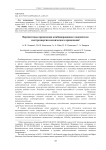
Prospects of application of the combined storage space application
Статья научная
Combined energy storage systems are widely used as part of renewable sources in the manufacturing industry, transportation infrastructure, space engineering, and other industries. This trend is due to their higher reliability and efficiency than that of power supplies made of the same type of cells, which can be observed, in particular, in devices for space applications, where power cells are subject to higher requirements for the range of operating temperatures, as well as for input and output characteristics. The article describes the development of the structure of a portable combined energy storage device based on a block of supercapacitors and batteries with a charge and discharge control system, with a scalable (based on the components used) spectrum of input characteristics and a wide range of operating temperatures. The authors presented a mathematical model of a combined energy storage device developed in the Simulink environment, which makes it possible to assess the performance capabilities of the proposed structure by analyzing the different modes of operation of the circuit. Such a device can be used in conditions of extremely low charging currents. For example, if the solar panels are shaded or their spatial orientation is sub-optimal, high-capacity lithium-ion batteries cannot be charged correctly. Also, the advantages of combined electricity storage structures include their operability over a wide temperature range thanks to the ability of supercapacitors to retain their charge even at low temperatures. The article also shows the printed circuit assembly in the form of a 3D model obtained by designing the device circuit in Altium Designer 17 CAD; the results of research and performance testing of a physically implemented combined energy storage device are shown, which confirm its performance characteristics on the example of one of the component modules of the prototype satellite platform CubeSat; the article also provides recommendations for the possible application of such devices and highlights prospects for the application of combined energy storage devices in actuating elements of large flexible spacecraft.
Бесплатно
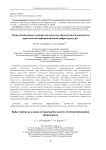
Radar stations as a means of ensuring the security of critical information infrastructure
Статья научная
The paper systematizes the main characteristics of radar stations as a means of ensuring the security of critical information infrastructure. The main types of radar stations are analyzed. It is shown that the dom-inant type among radars are pulse radars of the centimeter and millimeter ranges, which use a single an-tenna, are quite simple and ergonomic when used for their intended purpose. The concepts of tactical and technical characteristics of radar stations are analyzed. The features of the main tactical characteristic – the range of the radar station are considered. It is shown that in order to determine the target detection range, taking into account the influence of environmental conditions and terrain (at the location of the ra-dar station), it is necessary to use a system of equations containing the dependences of the detection ranges of energy, geometric, expected and actual (statistical). The correspondence of analytical calculations to actual results makes it possible to assess the reliability of assumptions about the reflecting properties of goals in various conditions of the situation while ensuring the security of critical information infrastruc-ture.
Бесплатно
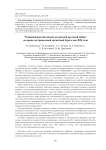
Radiation conditions in medium circular orbit during the extreme magnetic storm in may 2024
Статья научная
This article describes the results of monitoring the radiation situation in a medium circular orbit, obtained from the data of the experimental dose control complex (EDCC) of the spacecraft, devel-oped by JSC “Reshetnev”, with a circular orbit at an altitude of H = 8070 km. The article compares the experimentally obtained EDCC data with the calculated data, obtained during flight operation over two years of research. It should be noted that this orbit is poorly studied by Russian spacecraft developers in terms of the impact of space factors. Also considers the effect of the extreme geomagnetic disturbance in May 2024 on the rate of accumulation of the absorbed dose. The method of conducting the experiment consists of creating different conditions of mass protection for each of the nine sensors. The mass protection is varied by installing a steel grid with different cell thick-nesses. Thus, each sensitive element is in unique irradiation conditions – mass protection weakens the flux of ionizing radiation and changes its spectrum (differently for each type of radiation). When developing a new type of orbit for spacecraft operation, the task of ensuring the resistance of on-board equipment and the spacecraft as a whole to the effects of ionizing radiation factors of outer space, typical for this orbit, is relevant. For this, experimental confirmation or refinement of the calculated radia-tion model of impact based on the obtained in-kind data is necessary. The main task solved in the article is to monitor the levels of the integral accumulated dose behind various protections when exposed to ionizing radiation of outer space at an orbit of 8070 km and to compare the results of experimental data with the calculated estimates carried out according to OST134-1044-2007. The article reflects the results of long-term measurements of the absorbed dose of ionizing radiation for a spacecraft with such an orbit. As a result of the measurements, it was established that after an extreme magnetic storm, there is a significant increase in the rate of dose accumulation. This led to the dose rec-orded for 722 days exceeding the calculated value.
Бесплатно
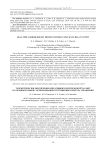
Real-time carrier rocket mission control using space relay system
Статья научная
One of the purposes of the multifunctional space relay system “Luch” is telemetry provision for the timely control of launches from the “Vostochniy” spaceport. Launch vehicles and upper stage units have special high-speed and lowspeed relay user equipment for telemetry relaying using the relay system “Luch”. This article is about special programs for processing such kind of telemetry at the Mission Control Centre (MCC) of the federal state unitary enterprise "Central Research Institute for Machine Building" (TsNIIMASH) for mission launch control. These programs are the part of telemetry processing software-hardware system of the MCC. Their purpose is real-time reception, processing and depicting results of processing telemetry data from high-speed and low-speed relay user equipment. This article contains description of the telemetry structure, transmission scheme and description of telemetry reception and processing approach based on the specific characteristics of such kind of telemetry. It contains information about tasks, solved by the MCC telemetry complex for giving timely, objective and correct information about a launch process as well. Created programs, processing algorithms and representation forms of the results of telemetry processing successfully provided missions control of the launches of the spacecraft “Kanopus-V-IK”, “Meteor-M”№2-1 in 2017, “Kanopus-V” №3, 4 in 2018. We propose to use developed programs for telemetry
Бесплатно
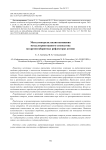
Статья научная
This article presents some of the main parameters of metal mesh that affect the radio-reflective properties of reflectors and the technology for attaining these parameters by controlling the tension capacity of the mesh sheet at various stages of the radio-reflective surface manufacturing. The article also includes a brief overview of the developed methods (applied at the RESHETNEV JSC) of measuring and controlling the tension capacity of spacecraft reflectors with mesh shields, along with the analysis of the shortcomings revealed in the application of these methods. The authors introduce a new method of the tension capacity control based on the local deformation of the metal mesh by pressure of the air drawn through its surface. There are the results of development and testing of the metod, and of a model device for controlling the mesh tension capacity. The purpose of the research is to determine the operability of the device and the ways of its possible application in controlling the tension of the mesh-made reflectors ready for operation. The developed method and the model device for its application allow in-process control of the mesh tension at any spatial position of the mesh sheet. There is an analysis of possible application prospects of the method in rocket and space industry for manufacturing radio-reflecting surfaces of spacecraft antennas. According to the results of the research, the ratio of the mesh tension capacity to the pressure of the air drawn through the sheet was determined. The need for further improvement of the designed device aimed at increasing the measurement data accuracy was also pointed out.. In case the laboratory testing of the upgraded device for controlling the mesh tension capacity proves successful, further tests will be carried out in the process of sheet cutting and in the reflector shield manufacture.
Бесплатно

Статья научная
The article provides an overview of current methods for measuring and controlling the tension force of the material of the spacecraft metal-mesh reflectors. The purpose of the research: to obtain the most accu-rate results of measuring the mesh tension. Based on the review, a comparative analysis of the advantages and disadvantages of each of the considered methods was carried out, when measuring the tension force on mesh for large-sized transformable spacecraft reflectors. In the article considered the methods of force measurement: photo method, the operation principle of which consists in the sequential photographing of a mesh on reflector frame certain zones; a method based on pattern recognition, similar to the photo method, but using an information and measurement system with a given information processing algorithm; a meth-od based on local membrane deformation, related to the contact type, in which the mesh tension measure-ment is defined as a reaction from the impact of physical force on the mesh surface; a method based on the influence of sound waves impact, which is based on the influence of sound waves impact on the mesh sur-face. The experimental part of the research described in the article includes the measurement of the mesh tension by the resonance method, as the most optimal method according to the analysis. The prospects of possible use of the resonance method in the aerospace industry of radio-reflecting surfaces of spacecraft antennas are proposed and analyzed. According to the results of the conducted research, the dependence of tension force of mesh is established on the sound vibrations frequency affecting the mesh, at which reso-nance occurs.
Бесплатно
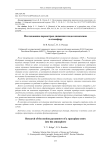
Research of the motion parameters of a spaceplane entry of into the atmosphere
Статья научная
After cessation of operation of the International Space Station in 2028, the Russian Federation plans to develop a national orbital station project. The Russian Space Station will differ from its predecessor in a greater practical aspect. One of the tasks assigned to the station will be the launch and management of a group of small satellites for remote sensing of the Earth, as well as the interaction and maintenance of prospective satellite groups. Due to the limited maneuverability of the orbital station and the potential for a malfunctioning device to be at a significant distance from it, the use of an autonomous spaceplane is proposed to increase the transportation and technical capabilities of the station. The research presents two aerodynamic designs of the spaceplane, and one of them is chosen based on the results of the aerodynamic and weight analysis. The spaceplane configuration and algorithms for its operation on the orbit and descent to the atmosphere are also presented. The goal of the research is to compare the trajectory parameters during the descent of the spacecraft from different descent orbits. For this purpose, a task was specified to determine the dependence of the area of the descent corridor on the initial parameters. The area of the descent corridor is determined by the boundary conditions, which depend on the operational parameters of the spaceplane. A computational program is written to solve differential equations of flight dynamics of a spaceplane by Euler's method in general and by Runge-Kutta method in a computational case. The results of the research are presented as the dependence of the area of the descent corridor on the altitude of descent. Graphical representations of the primary parameters of the spaceplane descent for the computational case are also provided.
Бесплатно
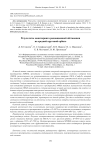
Results of monitoring the radiation environment in medium circular orbit
Статья научная
Problem definition – these data will form the basis for the development of technical solutions that will minimize mass, time and financial costs while ensuring the radiation resistance of on-board equipment and the spacecraft as a whole. Goal – the experimental dose control complex measures the level of absorbed ionizing space radiation doses in the sensitive element, assesses the radiation effects influence on the spacecraft, determines spacecraft’s residual radiation resource and refines impact models of the ionizing space radiation, located on an experimental spacecraft “Skif-D”, which was launched into orbit H=8070 km and inclination 90°. Results – flight experiment demonstrated high convergence of the comparative analysis’ results of the experimentally obtained impact levels in orbit of the operation of the “Skif-D” spacecraft with the impact model stated in the Russian Federation Scientific and Technical Documentation (OST134-1044-2007 amend.1 (2017) “Methods of the calculation of radiating conditions on-board of spacecrafts and specification of requirements for resistance of radio-electronic equipment of spacecrafts to the action of the charged particles from the space of natural origin”); Practical value – successful modernization of the ICDRM integral accumulated dose sensors in terms of their miniaturization and transition to a digital output (flight qualification of the sensors was obtained); the prospects of the concept of monitoring the integral accumulated radiation dose using semiconductor detectors with individual mass protection; experimental confirmation of a higher radiation exposure in the range of typical protections for ECB equal to 0.5–3 g/cm², on a 8000 km circular orbit compared to the GEO and 1500 km circular orbit.
Бесплатно
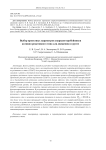
Статья научная
The aim of the work is the calculation and experimental substantiation of the expediency of using (both on Earth and on the surface of other planets) active-reactive type penetrator projectiles (SPART) for solving a number of scientific problems related to the formation of wells in the ground and the delivery of payloads to a certain depth. Research methods: various launch schemes (options for organizing the functioning process) of SPART are considered. The depth of penetration of an active-reactive type penetrator projectile into loam is calculated for the case when SPART is fired from a ballistic launcher located in such a way that the projectile exit velocity is equal to the velocity of its entry into the ground, and the thrust of the propulsion system is twice as great as the static resistance of the soil. From a variety of options, three SPART design schemes are selected depending on the combustion rate of the fuel used to ensure normal operation of the engine. As a result of the conducted calculation and experimental studies to determine the depth of penetration into loam of 152.4 mm penetrator projectiles 4.6 m long, launched from an artillery mount using the same powder charge weighing 18 kg, it was found that from the moment the engine is turned off until it comes to a complete stop, , which is more than twice the penetration depth of the same penetrator projectile if it moved in the soil only by inertia. Conclusion: the results presented in the article can be useful for researchers, graduate students and engineers involved in the creation and operation of aviation and rocket and space technology, and can also be useful for students of technical universities studying in the relevant specialties.
Бесплатно
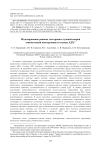
Simulation of the mode of electron-beam welding of a thin-wall structure from AD31 alloy
Статья научная
The article contains the results obtained by the authors in the study of the possibility of using electron beam welding (EBW) for thin-walled structures made of AD31 aluminum alloy. Today, EBW of similar de-signs are not used due to the lack of technology. Currently, other technologies for connecting similar struc-tures are used in production, but they have a high cost, the reason for which is due to the high percentage of defects. The method of using EBW proposed by the authors will significantly improve the quality of the joint in thin-walled structures and the reproducibility of the technological mode of welding products. The authors have developed a technological solution to the presented problem, based on many years of experi-ence in the use of models of thermal processes, accompanied by electron beam welding. As a subject of research, modeling of the parameters of electron-beam welding of thin-walled pipes for waveguide paths made of aluminum alloy AD31 is proposed. The article presents the results of mathematical modeling of technological parameters during heating of an aluminum alloy by energy sources equivalent to an electron beam during EBW. The analysis and evaluation of the simulation results was carried out using the optimal-ity criterion developed by the authors. The calculations performed by the authors are based on functional using mathematical models of metal heating by a complex heat source consisting of moving instantaneous point and linear energy sources. The article presents the results of calculations for a plate with a thickness of 0.12 cm, which corresponds to prototypes used in the manufacture of waveguide paths. As a result, by changing such values as: beam current and welding speed, the temperature distribution on the surface of the product during the EBW process was obtained, which showed the applicability of modeling for develop-ing a new technological process.
Бесплатно
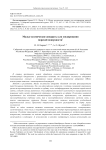
Small satellites for sea surface sounding
Статья научная
The paper presents a method of processing signals of radar sensing of the underlying surface using il-lumination from existing spacecraft (navigation, communication) and a constellation of small receiving spacecraft using synthetic aperture antennas. Methods and Results. Small spacecraft have many advantages over large satellites. Thus, they are rela-tively inexpensive to build, take minimal time from design to launch, can be easily modified to solve a particu-lar problem, and create less radio interference. The approach under consideration consists in redistribution of tasks to be solved between the constellation of satellites in orbit. Both regular high-orbit communication satellites and low-orbit satellite communication systems, as well as navigation satellites are represented as transmitter carriers (underlying surface illumination). These space systems use the necessary broadband sig-nal. Receivers of reflected signals are placed onboard small spacecrafts, and one of the tasks of the system is to perform research experiments, including on-line monitoring of fast-moving atmospheric cyclones. The work applies the method of sea surface radar imaging based on reflected signal models. The main results of the research are as follows: (1) possibility to use as a probing signal both a pulse and a broadband signal with a priori unknown modulation law, (2) acceptable resolution, (3) possibility to significantly reduce the system cost as compared to the existing space radars of sea surface survey. Conclusions. As a result of using a multi-position radar system, which uses small receiving antennas with synthetic aperture and sea surface illumination from operating spacecraft, it is possible to move to a qualitatively new level of solving problems of sea surface remote sensing with spatial resolution up to 1 meter, regardless of illumination and cloud cover presence.
Бесплатно

Solar thermal propulsion systems with various high-temperature power sources
Статья научная
The paper provides an overview of space thermal propulsion (STP) systems using concentrated solar energy as the main source of power. The paper considers solar thermal rocket engines of various configurations including those with afterburning of hydrogen heated in the “concentrator – absorber” system (CAS) with various oxidizers. Together with hydrogen the oxidizers form high-energy fuel compositions with a high value of ratio of components mass flow-rates which allows reducing the dimension of the CAS. The extreme dependences of the engine thrust on the specific impulse are shown for various values of the hydrogen heating temperature and the oxidizer-to-fuel ratio. The coefficients of the regression dependencies for the efficiency of a two-stage absorber and an absorber with the maximum non-isothermal heating having the highest possible energy efficiency are presented. The algorithms for calculating the main design parameters of the STP system as a part of a spacecraft (SC) are given, taking into account the ballistic parameters of the multi-turn transfer trajectory with multiple active segments applied to the STP systems having an energy-efficient non-isothermal CAS. The engine configurations with thermal heat accumulation and possible afterburning of heated hydrogen are also considered. Thermal accumulation allows accumulating energy in the solar-absorber during passive movement in the illuminated portions of the transfer orbits regardless of the lighting conditions of the apsidal orbit portions where the engine is turned on. Suitable heat-accumulating phase transition materials (HAM) such as the eutectic alloy of boron and silicon as well as refractory beryllium oxide are selected for different phases of the interorbital transfer to the geostationary Earth orbit (GEO). The main characteristics of different configurations of the STP systems in the problem of placing a spacecraft (SC) into high-energy GEO orbits are shown. A model of the SCSTP system operation is given taking into account ballistic parameters and the possibility of accumulating thermal energy. It is shown that the oxidizer-to-fuel ratio in STP systems with thermal energy storage (TES) increases with the decrease of the interorbital transfer time. The STP configurations with a two-stage TES showing a large energy-mass efficiency at moderate values of the solar concentrator accuracy parameter are considered.
Бесплатно
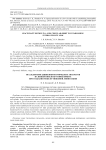
Spacecraft motion in a low circular orbit in establishing intersatellite link
Статья научная
The article investigates the problem of inter-satellite linking in the constellation of spacecraft in a low circular orbit. A specific problem of establishing intersatellite link (IL) in that orbit – cross-pointing of the antennae – is also studied. To support cross-tracking, it is important to place spacecraft (SC) in the orbital plane so that they are constantly in the zone of mutual visibility. The line-of-sight range is analyzed both in one orbital plane and between adjacent planes. IL is treated in terms of the orbital constellation (OC) ballistic formation. Several typical modes of motion of SC with IL in adjacent planes are determined – parallel, orthogonal, oncoming. The parameter values of IL antenna pointing are also assessed. The obtained results of OC formation and antenna pointing parameters’ calculations may be relevant for establishing a modified system.
Бесплатно
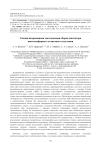
Specialized LED assembly for out-atmospheric solar simulator
Статья научная
Traditional solar simulators for thermal vacuum tests of spacecraft are based on gas-discharge lamps. Due to the characteristics of such lamps, they can only be installed outside the thermal vacuum chamber. High-efficiency LEDs can be installed directly in the thermal vacuum chamber, which can significantly improve the luminous and operational characteristics of solar simulators. Obtaining a spectrum close to the spectrum of the extraterrestrial Sun (AM0) is one of the primary and most difficult tasks in ensuring that the luminous characteristics of the solar simulator meet the requirements. The article considers a pre-viously proposed model of a combined emitter consisting of halogen lamps and assemblies of high-performance LEDs of various wavelengths. We have proposed a method for determining the spectral match for AM0 solar simulators and determined the requirements for LED assemblies intended for use in the combined emitter. Simulation with a sample of the most suitable commercially available LED assembly, at the nominal power level of halogen lamps, showed a good spectral match, which deteriorates significantly with decreasing lamp power. At the same time, many programs and methods of thermal vacuum tests re-quire simulation of different irradiance levels. Taking this into account, the authors developed an experi-mental LED assembly. Simulation of the combined emitter with this LED assembly showed the best results. The required spectral match is maintained at various irradiance levels. The achieved characteristics of the developed LED assembly are not limiting and can be improved by further optimization.
Бесплатно

